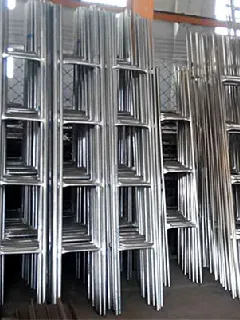loading...
- No. 9, Xingyuan South Street, Dongwaihuan Road, Zaoqiang County, Hengshui, Hebei, China
- admin@zjcomposites.com
- +86 15097380338
- Welcome to visit our website!
High-Performance FRP Bridge Deck Solutions
FRP Bridge Deck Revolutionizing Modern Infrastructure
The use of Fiber Reinforced Polymer (FRP) materials in bridge deck construction is becoming increasingly prevalent, marking a significant shift in engineering practices. As infrastructure ages and the demand for innovative solutions grows, FRP offers a lightweight, durable, and corrosion-resistant alternative to traditional materials such as concrete and steel.
FRP Bridge Deck Revolutionizing Modern Infrastructure
Moreover, FRP materials excel in resisting chemical corrosion and environmental degradation. Unlike conventional materials that can suffer from rusting or deterioration due to harsh weather conditions and de-icing salts, FRP maintains its integrity over time. This longevity not only reduces maintenance costs but also extends the lifespan of the bridge itself, making it an economically viable option for municipalities and governments.
frp bridge deck

The design flexibility of FRP also allows engineers to create more aesthetically pleasing structures. With various shapes, colors, and surface finishes available, FRP can be tailored to complement the surrounding environment, enhancing both functionality and visual appeal. Additionally, the non-magnetic properties of FRP can be advantageous in certain contexts, such as near sensitive electronic equipment or areas where magnetic interference is a concern.
FRP bridge decks have already been successfully implemented in several projects worldwide, showcasing their viability and effectiveness. As technology advances and production techniques improve, the cost of FRP is expected to decrease, making it an even more attractive option for new projects.
In conclusion, the integration of FRP bridge decks into modern infrastructure represents a promising evolution in civil engineering. Their lightweight, durable, and corrosion-resistant qualities, combined with the aesthetic flexibility they offer, position FRP as a key player in the future of bridge construction. As we continue to face the challenges of aging infrastructure, FRP technology could play a crucial role in building safer, more sustainable bridges for generations to come.
-
GRP Structures: The Future of Lightweight, High-Performance EngineeringNewsJun.20,2025
-
FRP Water Tank: High-Performance Storage for Corrosive and Clean Water SystemsNewsJun.20,2025
-
FRP Square Tube: The New Industry Standard for Chemical and Structural ApplicationsNewsJun.20,2025
-
FRP Pultruded Profiles: The Ultimate Choice for Lightweight Structural StrengthNewsJun.20,2025
-
FRP Handrails: The Safer, Smarter, and Stronger Choice for Modern InfrastructureNewsJun.20,2025
-
FRP Grating: The Smart Solution for Durable, Lightweight Industrial FlooringNewsJun.20,2025
-
Why Choose a Galvanized Water Tank for Your Storage NeedsNewsMay.21,2025
